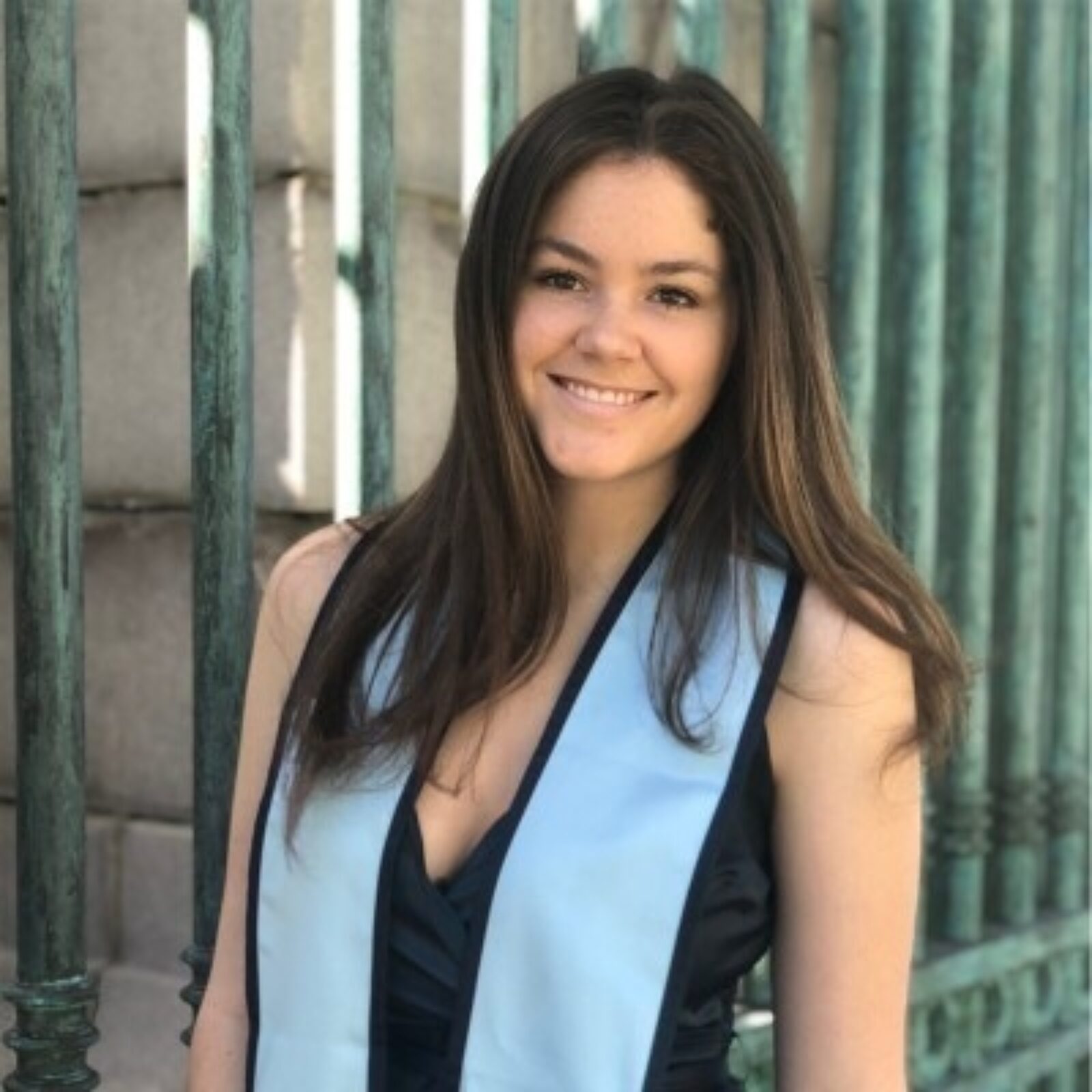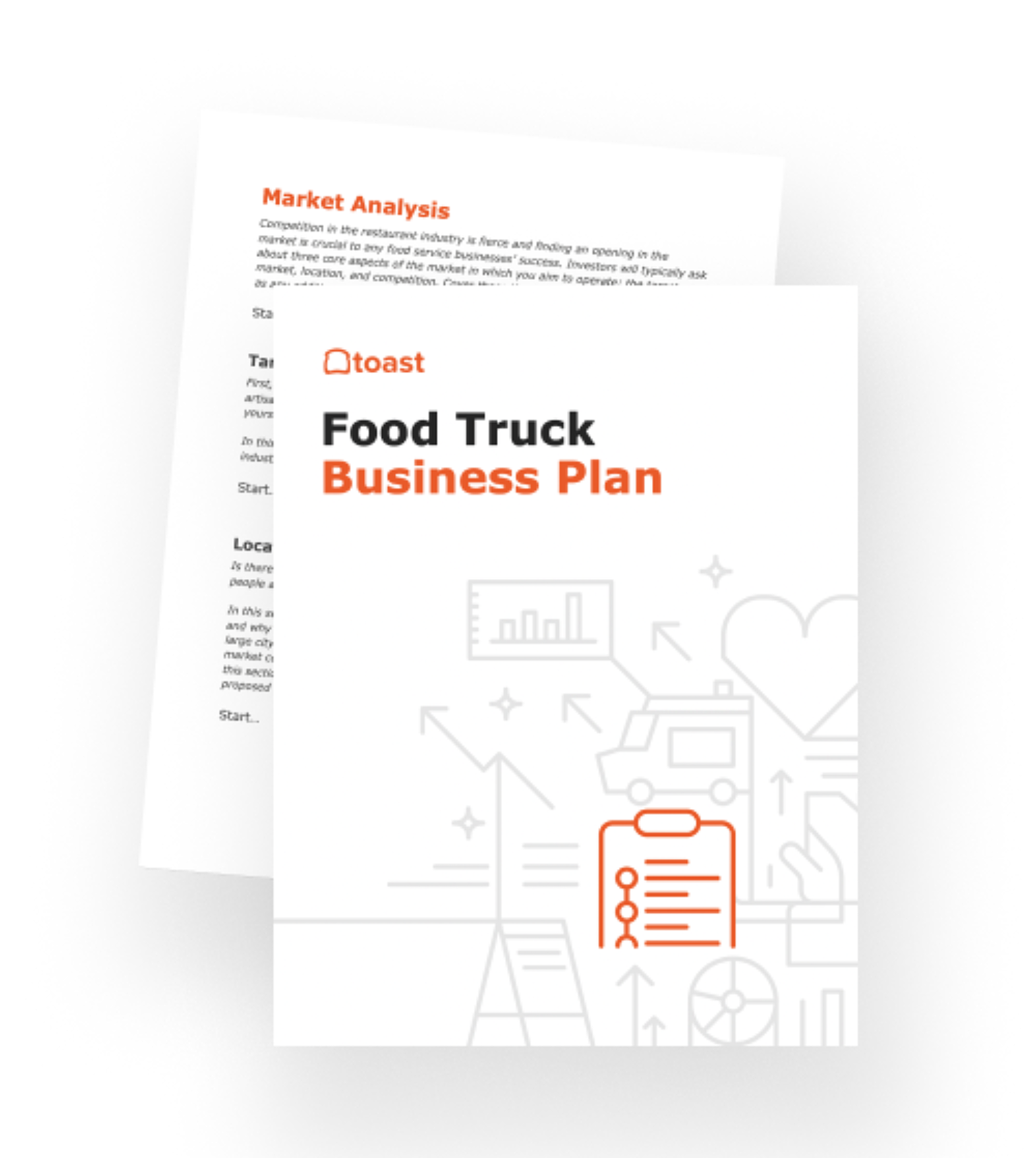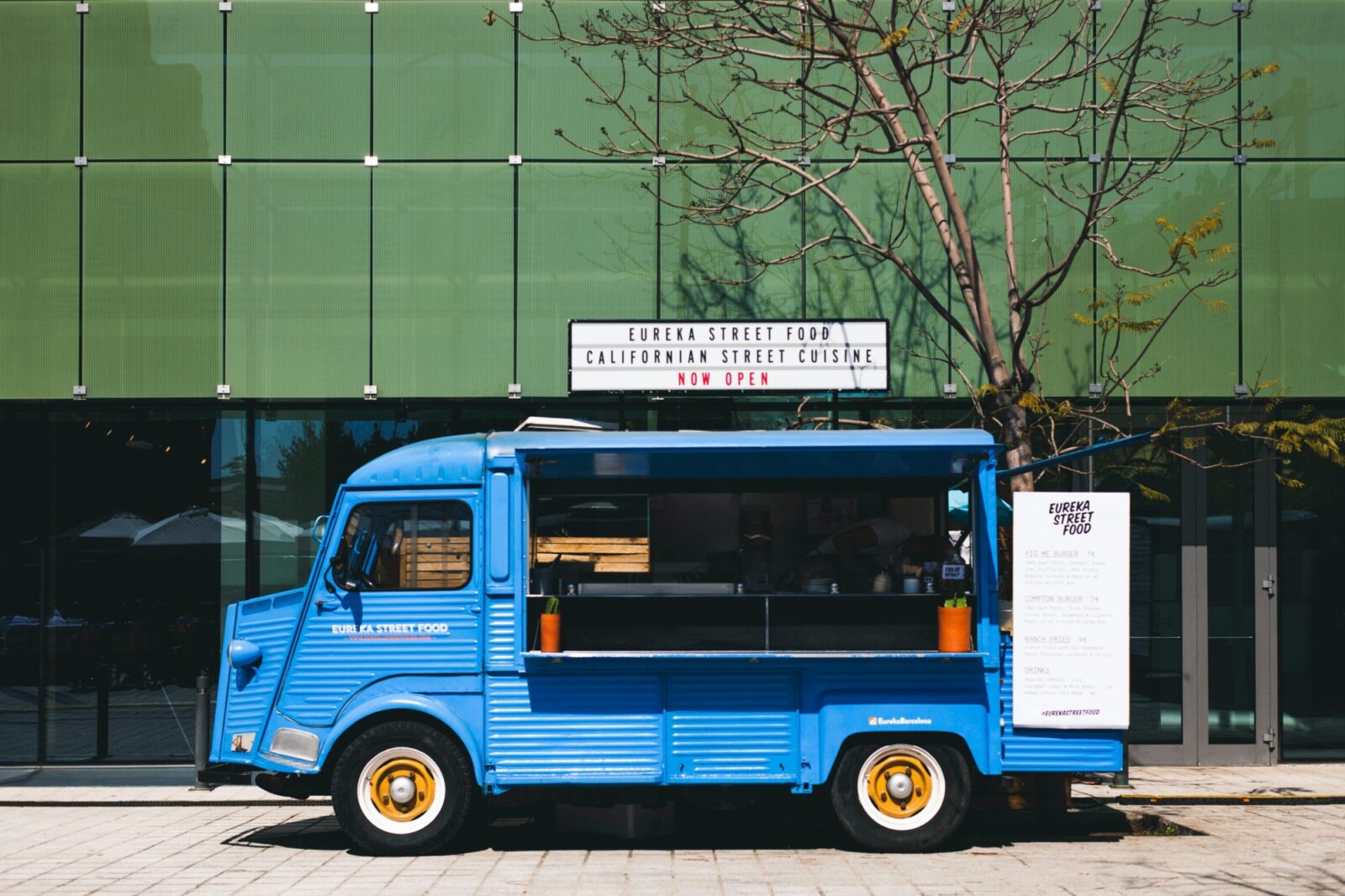
How to Build a Food Truck
Here’s how to build a food truck, step by step.

Caroline PriceAuthor


Food Truck Business Plan Template
Use this free food truck business plan template to easily create a great business plan that organizes your vision and helps you start, grow, or raise funding for your food truck.
Any restaurant needs a great storefront, and a food truck is no different. Building and designing your own food truck is an ambitious endeavor: with a smaller scale, you have to optimize the layout to pack in just as much equipment to run an efficient kitchen in a much smaller space.
The truck size, equipment you want to buy, safe ventilation and drainage, and parking location are all key aspects to keep in mind as you get started. You'll want to work with professionals here, unless you're an aspiring food truck owner slash contractor, plumber, and engineer! Building your own truck will be a significant part of your starting budget, so be sure to outline how you plan to approach the process in your business plan.
Food Truck Business Plan Template
Use this free food truck business plan template to easily create a great business plan that organizes your vision and helps you start, grow, or raise funding for your food truck.

How to Build a Food Truck from Scratch
Wondering how to build a food truck from scratch? We'll walk you through it.
Buy a Truck
Not all trucks are created equal. As you look for the perfect truck for your food business, think about what makes the most sense for your cuisine and concept.
Food trucks can range from 10 to 50 feet long, and the size greatly impacts how big your kitchen is and how large your staff will be. Though a large truck might sound appealing for some, keep in mind that a bigger food truck will come with higher fuel costs, larger staffing needs, and more difficulty parking. At the same time, a larger scale operation can also bring in more revenue.
A smaller food truck also has its pros and cons: it might be more manageable and be less expensive to operate, but you’ll have less space for equipment and movement, and likely won’t be able to produce the volume of a larger truck.
Whatever you choose, these measurements will determine how you go about making each of the following decisions, so take your time and be thoughtful in figuring out what truck is right for you.
Outfit the Truck with Cooking Equipment
Your specific equipment needs depend on your concept. For example, if you run an ice cream food truck, you’ll need a commercial freezer, but its size will depend on your sales volume. If you’re serving up hot empanadas, you’ll need a deep fryer, but space might dictate whether you go with a countertop or a floor model.
Regardless of your concept, there are some common items that most food trucks will need. Here’s a list of common food truck equipment items to get you started:
Stove or flattop
Oven
Fryer
Overhead ventilation
Prep tables / counters
Refrigerator
Freezer
Sink
For a more extensive list of essential restaurant equipment (this includes food trucks!) check out this post.
Ensure Proper Ventilation
Working in a smaller space requires good ventilation. Be sure to plan for proper ventilation in your food truck, and take this into account when planning the layout and size. Proper airflow is key to creating a safe and comfortable work environment for your staff.
The type of ventilation you’ll need depends on the equipment you’ll be using and what you’ll be making. Boiling water for pasta doesn’t require as much ventilation as searing steak for a sandwich, for example. And above all, make sure that your ventilation system is up to code and is powerful enough to work properly in the size of your food truck kitchen.
Ensure Proper Drainage
Proper plumbing and drainage are essential to staying up to code with your food truck. This means having the correct water tanks for a fresh water system, a hot water system, and grey water. Grey water is all of the contaminated water that is produced from your food truck kitchen. This is really anything that goes down the drain and contains contaminants like soap, food particles, and grease. Each city will have different requirements for where to properly dispose of greywater, so make sure to look up the regulations in your area.
Decorate the Exterior
We eat with our eyes first, and for food trucks, the feast begins when customers first spot your truck. The look of your truck is a huge part of food truck marketing.
A food truck is a rolling billboard, so it’s important to get the design right, even if that means investing more money up front. More importantly, your food truck’s design will become the basis for your branding efforts. Your colors, logo, and overall vibe will be what your customers come to associate with your food, so the design is about more than just attracting hungry diners.
Of course, you can still have awesome food and loyal customers if your truck features minimal design. But, you’re going to have to work twice as hard as the trucks with bright colors and clear design concepts to make that happen. This is especially true when you’re serving at food truck festivals and fairs, where customers have dozens of choices. You want your truck’s design to supplement the amazing food instead of forcing your food to work extra hard to get customers to the window.
A few things to keep in mind when designing your food truck’s exterior:
Connect design to your brand: It’s important that your design has a strong sense of who you are as a business.
Consider working with a designer: It’s important to work with a designer who allows you to talk about your vision for the truck. Your designer should welcome your feedback throughout the design process, to ensure you get a finished product that you’re happy with.
Don’t forget about your logo: Your logo will also be a big part of branding your truck. Your logo should reflect your brand, cuisine, and overall style.
Find Somewhere to Park the Food Truck
Unfortunately, you can’t just park anywhere. Most cities and towns have specific zoning rules that apply to food trucks, and dictate where you can, and can’t, park. Each city will have its own rules around what licenses and permits you’ll need to obtain as well. Googling “food truck regulations [your state]” is the best way to start finding out more about the restrictions for your area, and it's always a good idea to consult with a lawyer.
In general, downtown areas, parks, and office buildings are typically great places to look into parking food trucks. Festivals, farmers markets, and events are also great places to check out. And remember, always face your ordering window towards the sidewalk. This ensures that your customers have a safe place to order and stand while they wait for their meal (and doesn’t put them in the middle of oncoming traffic).
Find a Commissary Kitchen for Prep
A small, crowded food truck isn’t the best place to prep. If it’s an option for you, using a commissary kitchen for food prep is a great way to have more space to move around and more room for equipment and supplies that might not fit (or be needed!) on the truck. This is also a way to expand your business and take catering or larger scale orders, and not overwhelm the small space on the truck.
Renting space in a shared or private commercial kitchen are both popular options, but there are ways to get creative about finding space. Some restaurants might even let you use their kitchens during off-peak hours, for a lower cost.
How Much Does it Cost to Build a Food Truck?
As always, costs vary. The truck itself can cost between $10,000 and $100,000, depending on the condition and how much work you’re willing to put into it. Customizing the truck with electrical wiring, drainage, equipment, and kitchen configuration is going to add an additional $50,0000 to $200,000. Permits and licenses, parking fees, and commercial kitchen space also adds up, and all in all, you’re looking at $75,000 to $250,0000 total to get your food truck up and running.
For a more extensive breakdown of how much it costs to build a food truck, check out this post.
Related Food Truck Resources
- How Much Does it Cost to Start a Food Truck
- How to Start a Food Truck Business
- Food Truck POS Comparison Tool
- Best Food Truck Ideas
- Food Truck POS System
- Food Truck Name Ideas
- Food Truck Equipment
- Food Truck Design Ideas
- Food Truck Websites
- Food Truck Marketing Ideas
- Food Truck Menu Ideas
- How Much Do Food Trucks Make
- How to Do Food Truck Branding
- Food Truck Design Ideas
- How to Write a Food Truck Business Plan
- Food Truck Business Plan Template
- Best Food Truck POS Systems
- Food Truck Supplies
Food Truck POS Comparison Tool
A free, customizable Food Truck POS Comparison Tool to research and compare point of sale systems in one Excel spreadsheet or editable PDF.

Is this article helpful?
DISCLAIMER: This information is provided for general informational purposes only, and publication does not constitute an endorsement. Toast does not warrant the accuracy or completeness of any information, text, graphics, links, or other items contained within this content. Toast does not guarantee you will achieve any specific results if you follow any advice herein. It may be advisable for you to consult with a professional such as a lawyer, accountant, or business advisor for advice specific to your situation.
Read More
Subscribe to On the Line
Sign up to get industry intel, advice, tools, and honest takes from real people tackling their restaurants’ greatest challenges.



